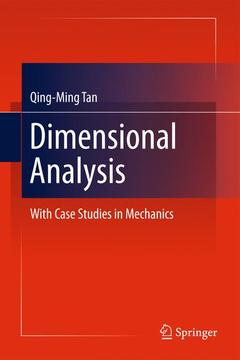Description
Dimensional Analysis, 2011
With Case Studies in Mechanics
Author: Tan Qing-Ming
Language: English
Subject for Dimensional Analysis:
Approximative price 105.49 €
In Print (Delivery period: 15 days).
Add to cartPublication date: 10-2014
186 p. · 15.5x23.5 cm · Paperback
Approximative price 105.49 €
In Print (Delivery period: 15 days).
Add to cartPublication date: 06-2011
186 p. · 15.5x23.5 cm · Hardback
Description
/li>Contents
/li>Comment
/li>
Dimensional analysis is an essential scientific method and a powerful tool for solving problems in physics and engineering. This book starts by introducing the Pi Theorem, which is the theoretical foundation of dimensional analysis. It also provides ample and detailed examples of how dimensional analysis is applied to solving problems in various branches of mechanics. The book covers the extensive findings on explosion mechanics and impact dynamics contributed by the author?s research group over the past forty years at the Chinese Academy of Sciences.
The book is intended for research scientists and engineers working in the fields of physics and engineering, as well as graduate students and advanced undergraduates of the related fields.
Qing-Ming Tan is a former Professor at the Institute of Mechanics, the Chinese Academy of Sciences, China.
Provides ample and detailed examples of how dimensional analysis is applied to solve problems in various branches of mechanics
Adopts the approach that begins by separating the dependent variables from the independent variables on the basis of a physical analysis of the problem
Reflects the rich research results on explosion mechanics and impact dynamics at the author’s group headed by Prof. C. M. Cheng during the past forty years




